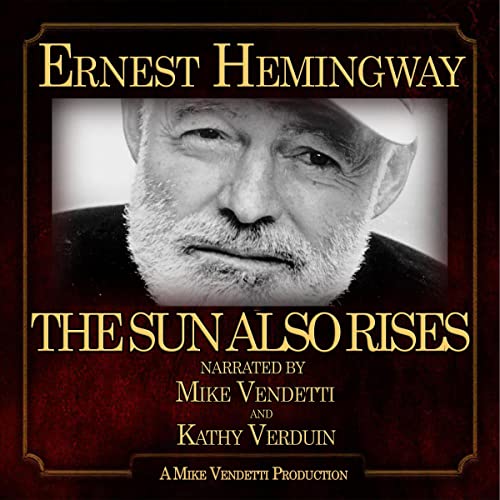Sun Also Rises

Ernest Hemingway’s “The Sun Also Rises” stands as an enduring testament to the Lost Generation, a term coined by Hemingway himself to describe the disillusioned individuals who came of age during World War I. Published in 1926, this novel captures the essence of post-war Europe, chronicling the lives of expatriates who grapple with a sense of aimlessness and disillusionment. Through its vivid portrayal of characters navigating the complexities of love, friendship, and identity, “The Sun Also Rises” continues to captivate readers with its timeless themes and evocative prose.
At the heart of the novel is the enigmatic figure of Jake Barnes, a war veteran grappling with physical and emotional wounds. Struggling with impotence as a result of war injuries, Jake embodies the disillusionment and alienation felt by many of his contemporaries. His journey serves as a lens through which readers explore themes of masculinity, identity, and the search for meaning in a world ravaged by war.
The narrative unfolds against the backdrop of the vibrant and hedonistic world of 1920s Paris, where expatriates sought refuge from the trauma of war. From the bustling streets of Montparnasse to the tranquil landscapes of Pamplona, Hemingway’s vivid descriptions transport readers to a bygone era, immersing them in the sights, sounds, and sensations of post-war Europe.
Central to the novel’s narrative is the tumultuous relationship between Jake and Lady Brett Ashley, a charismatic and free-spirited woman who embodies the spirit of the Roaring Twenties. Their love is both passionate and fraught with tension, symbolizing the struggle to find intimacy and connection in a world marked by emotional dislocation.
Surrounding Jake and Brett are a cast of memorable characters, each grappling with their own demons and desires. From the brash and larger-than-life Robert Cohn to the brooding and melancholic Mike Campbell, Hemingway’s characters are multi-dimensional and deeply human, reflecting the complexities of the human experience.
One of the novel’s most enduring themes is the quest for authenticity in a world characterized by superficiality and disillusionment. The characters in “The Sun Also Rises” grapple with questions of identity and purpose, seeking meaning amidst the chaos and uncertainty of post-war Europe. Through their journeys, Hemingway explores the existential angst that pervaded the Lost Generation, capturing the sense of alienation and disillusionment that defined the era.
Another central motif in the novel is the concept of masculinity and its relationship to power and vulnerability. Jake’s emasculation as a result of his war injuries serves as a metaphor for the broader crisis of masculinity that emerged in the aftermath of World War I. Hemingway’s portrayal of Jake’s struggle to assert his masculinity in a world that prizes physical prowess and virility is both poignant and profound, highlighting the complexities of gender roles and identity.
“The Sun Also Rises” is also renowned for its spare and economical prose style, which has become synonymous with Hemingway’s literary legacy. Hemingway’s use of understatement and implication imbues the novel with a sense of ambiguity and depth, inviting readers to read between the lines and draw their own conclusions. His sparse yet evocative language captures the essence of the Lost Generation with a clarity and precision that remains unmatched.
Beyond its thematic richness and literary craftsmanship, “The Sun Also Rises” endures as a timeless work of literature because of its universal resonance. Despite being set in a specific time and place, the novel speaks to the universal human experience of love, loss, and longing. Hemingway’s characters may be products of their time, but their struggles and aspirations are as relevant today as they were nearly a century ago.
Conclusion
Ernest Hemingway’s “The Sun Also Rises” remains a seminal work of twentieth-century literature, offering a poignant and compelling portrait of the Lost Generation. Through its vivid characters, evocative settings, and timeless themes, the novel continues to resonate with readers, inviting them to explore the complexities of the human condition in a world marked by uncertainty and disillusionment. As we navigate our own tumultuous times, the lessons and insights of “The Sun Also Rises” serve as a beacon of hope and inspiration, reminding us of the enduring power of literature to illuminate the darkest corners of the human soul.
